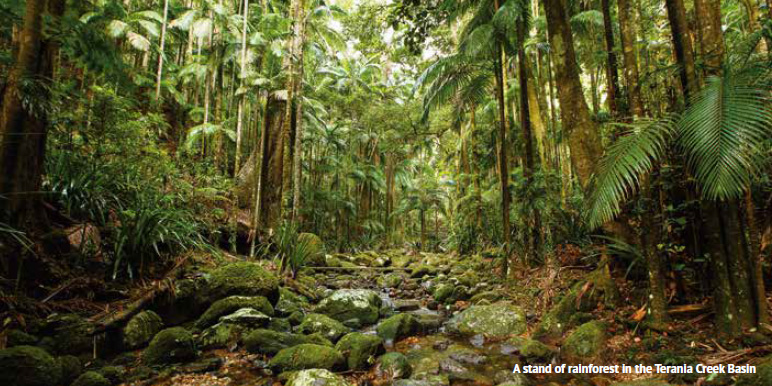It is easy—and sometimes, it seems, only sensible—to be negative when we look at the environmental issues facing us today. The big ones—climate change, native species loss, old growth logging, deforestation, Adani, etc—scarcely need repeating. Less noticed, perhaps, is the consistent erosion of our already protected areas: Hunting in NSW reserves; ‘eco’ lodges at Lake Malbena in Tasmania; the encroaching commercialisation of our national parks. Now, there’s no denying that the argument for conservation has long been bolstered by the fact more dollars can be made—and more jobs created—by tourism rather than logging, but that doesn’t mean our parks should be open slather. Encourage more people into the bush, of course, but so too is it necessary to keep access to some of our nation’s most beautiful places difficult, inaccessible, and arduous. Yes, it is a double standard, but as in life, we shouldn’t always look for neat answers. Sometimes our responses to dilemmas should be nuanced.
When looking at the sum total of environmental threats facing us, both overt and insidious, it is all-too-easy to wring one’s hands and sigh in resignation, or perhaps take action by signing yet another online petition. Quite frankly, though, while not belittling online efforts, or petitions, or letters—they’re all still critical elements in any environemtnal campaign—there are times when more is needed. There are times, too, when more than protests in our capital cities are needed. While it is only on the rarest of occasions that anything other than the weight of public opinion really shifts political balance, in the interim—while legislators ignore evidence, fiddling while Rome burns—often boots on the ground are necessary to protect our natural treasures. Often it takes the bravest of the brave, the truly courageous, to risk arrest, or even their lives, to protect just a
single tree, let alone an entire ecosystem.
If this sounds like a call to arms, it is. While some of our country’s natural heritage has been preserved with minimal fuss, much has only been saved by protracted battle. And, at times, by direct action and civil disobedience.
Over the next year, starting this issue, Wild will be running a series chronicling six of Australia’s greatest environmental battles to save pristine environments. They all involve direct action, and they span Wild’s entire history. Protests at Terania Creek—the first campaign we’ll cover—started exactly 40 years ago in August 1979, with the campaign still ongoing when, in 1981, our Issue #1 hit the stands. From there we’ll move through the decades: the Franklin River; the Daintree; the Southeast Forests; Ningaloo Reef; and the contemporary fight to save the Tarkine.
There had, of course, been other major environmental campaigns prior to Terania Creek. Notwithstanding the direct action taken by Aboriginal Australians to protect their land, the first, that I know of, was a fight to stop logging in Sydney’s Royal National Park back in the 1920s. The following decade, an arguably more seminal event in the history of Australian conservation occurred when a campaign led by Myles Dunphy saved
the magnificent Blue Gum Forest. In the 1960s, the fight to save the Colong Caves was successful. The fight to save Lake Pedder, unfortunately, was not.
Similarly, there have been other notable battles in the years since Terania Creek that we won’t cover, and perhaps some readers will disagree with the six we’ve chosen. But it’s been a judgement call, and I feel bigger
disagreements would ensue were we to drop any of the campaigns we’ve settled on.
As to why we want to run this series, and why now, firstly, some of these events happened long enough ago that some readers may not only not know the details, they may not know of the campaigns at all. Secondly,
each is simply a great story in and of itself—David v Goliath, except David in this case is not fighting for himself but instead for a defenceless but utterly stunning, utterly important and utterly irreplaceable beauty. Thirdly, to look back on these events with the hindsight a historical perspective can provide. And lastly, and perhaps
most importantly, to give us hope. It’s easy to become cynical and/or despondent when confronted by the environmental issues facing us today. But environmental destruction is not a forgone conclusion. To
be sure, as this series will chronicle, there have been losses. Not every campaign has been an unalloyed success. But there have been significant triumphs as well, victories that will be celebrated in generations to
come. These stories offer us hope. And out of hope is born courage.
James McCormack
Editor


